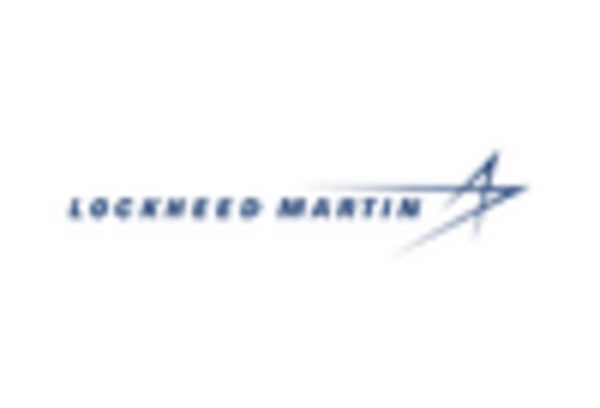Rising Defense Budgets
The Military and Defense Semiconductor Market is experiencing a notable increase in defense budgets across various nations. Governments are prioritizing military modernization and technological advancements, leading to heightened investments in semiconductor technologies. For instance, the U.S. Department of Defense has allocated substantial funds for research and development in advanced semiconductor applications, which are crucial for enhancing military capabilities. This trend is mirrored in other countries, where defense spending is projected to grow, thereby driving demand for semiconductors that support advanced weaponry, communication systems, and surveillance technologies. As nations seek to maintain strategic advantages, the Military and Defense Semiconductor Market is likely to benefit from this upward trajectory in defense expenditures.
Focus on Cybersecurity Solutions
The Military and Defense Semiconductor Market is increasingly shaped by the focus on cybersecurity solutions. As military operations become more digitized, the threat landscape evolves, necessitating robust semiconductor technologies that can withstand cyber threats. Governments are investing in secure semiconductor designs to protect sensitive military data and communications. This emphasis on cybersecurity is driving innovation in the development of secure chips and encryption technologies, which are essential for safeguarding military assets. The growing recognition of cybersecurity as a critical component of national defense strategies suggests that the Military and Defense Semiconductor Market will continue to expand as defense agencies prioritize secure semiconductor solutions.
Increased Demand for Autonomous Systems
The Military and Defense Semiconductor Market is witnessing a surge in demand for autonomous systems, including drones and unmanned vehicles. These systems require advanced semiconductor technologies to operate effectively, necessitating high-performance chips for navigation, communication, and data processing. As military forces increasingly adopt autonomous solutions for reconnaissance and combat operations, the need for reliable and efficient semiconductors becomes paramount. Reports indicate that the market for military drones alone is expected to reach substantial figures, further propelling the demand for semiconductors tailored for these applications. This trend underscores the critical role of the Military and Defense Semiconductor Market in supporting the development and deployment of autonomous military systems.
Technological Advancements in Defense Systems
The Military and Defense Semiconductor Market is significantly influenced by rapid technological advancements in defense systems. Innovations in areas such as radar, missile guidance, and electronic warfare are increasingly reliant on sophisticated semiconductor solutions. The integration of cutting-edge technologies, including 5G and IoT, is reshaping military operations, necessitating the development of high-performance semiconductors. For example, the demand for advanced microprocessors and sensors is surging as military platforms become more interconnected and data-driven. This evolution not only enhances operational efficiency but also drives the need for specialized semiconductor components tailored for defense applications. Consequently, the Military and Defense Semiconductor Market is poised for growth as these technological advancements continue to unfold.
Geopolitical Tensions and Supply Chain Resilience
The Military and Defense Semiconductor Market is significantly impacted by geopolitical tensions, which have prompted nations to reassess their supply chain strategies. As countries face potential disruptions in semiconductor supply due to international conflicts or trade disputes, there is a growing emphasis on building resilient supply chains. This shift is likely to drive investments in domestic semiconductor manufacturing capabilities, ensuring that military applications are not hindered by external dependencies. The increasing focus on supply chain security is expected to create opportunities for the Military and Defense Semiconductor Market, as governments seek to bolster their technological independence and ensure the availability of critical semiconductor components for defense purposes.
















Leave a Comment